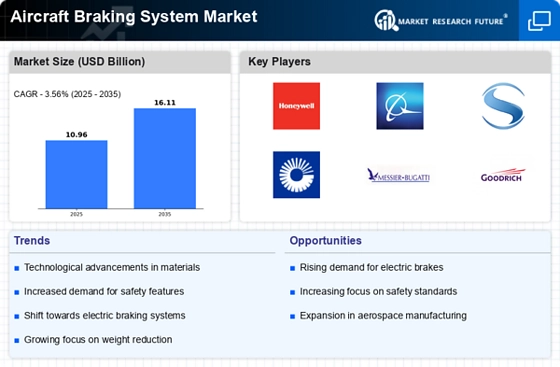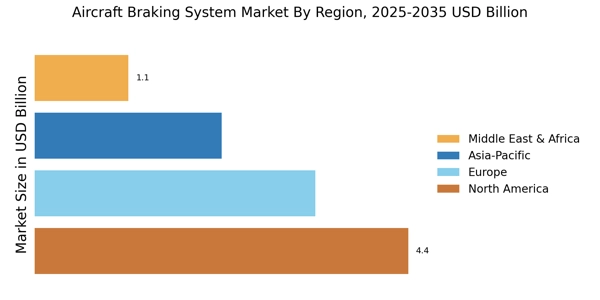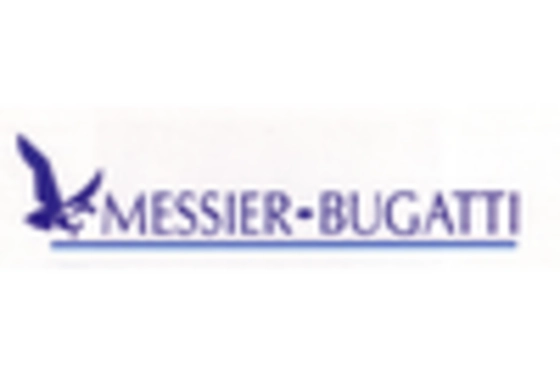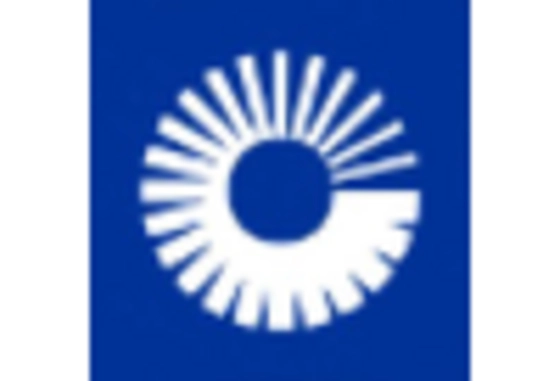Increasing Air Traffic
The Aircraft Braking System Market is experiencing growth due to the rising air traffic across various regions. As more airlines expand their fleets to accommodate increasing passenger demand, the need for efficient and reliable braking systems becomes paramount. According to recent data, the number of commercial aircraft is projected to reach over 39,000 by 2038, which indicates a substantial increase in the demand for advanced braking systems. This surge in air traffic not only necessitates the development of innovative braking technologies but also emphasizes the importance of safety and performance in aircraft operations. Consequently, manufacturers are focusing on enhancing the efficiency and reliability of braking systems to meet the evolving needs of the aviation sector.
Growth of the Aviation Sector
The Aircraft Braking System Market is benefiting from the overall growth of the aviation sector, which is driven by factors such as increasing disposable incomes and a growing middle class in various regions. As more individuals are able to afford air travel, airlines are expanding their operations, leading to a higher demand for new aircraft and, consequently, advanced braking systems. The International Air Transport Association (IATA) has projected that passenger numbers will reach 8.2 billion by 2037, indicating a robust growth trajectory for the aviation industry. This expansion necessitates the development of efficient braking systems that can support the increasing number of flights and ensure passenger safety. Therefore, the growth of the aviation sector is a key driver for the Aircraft Braking System Market.
Emergence of Advanced Materials
The Aircraft Braking System Market is witnessing a shift towards the use of advanced materials in the manufacturing of braking systems. Innovations in materials science have led to the development of lighter and more durable components, which can significantly enhance the performance of braking systems. For example, carbon-carbon composites and ceramic materials are increasingly being utilized due to their superior thermal properties and weight advantages. This transition to advanced materials is expected to improve the overall efficiency of aircraft braking systems, thereby contributing to fuel savings and reduced operational costs. As airlines seek to optimize their performance and reduce environmental impact, the adoption of these advanced materials is likely to play a crucial role in shaping the future of the Aircraft Braking System Market.
Regulatory Compliance and Safety Standards
The Aircraft Braking System Market is significantly influenced by stringent regulatory compliance and safety standards imposed by aviation authorities. These regulations are designed to ensure the safety and reliability of aircraft operations, which in turn drives the demand for advanced braking systems. For instance, the Federal Aviation Administration (FAA) and the European Union Aviation Safety Agency (EASA) have established rigorous guidelines that manufacturers must adhere to. As a result, companies are investing in research and development to create braking systems that not only meet but exceed these safety standards. This focus on compliance not only enhances the safety of air travel but also fosters innovation within the industry, leading to the development of more efficient and effective braking solutions.
Technological Innovations in Braking Systems
The Aircraft Braking System Market is being propelled by ongoing technological innovations that enhance the performance and reliability of braking systems. The integration of smart technologies, such as anti-skid systems and automated braking mechanisms, is revolutionizing the way aircraft braking systems operate. These innovations not only improve safety but also optimize the overall efficiency of aircraft operations. Furthermore, advancements in data analytics and predictive maintenance are enabling airlines to monitor braking system performance in real-time, leading to proactive maintenance and reduced downtime. As technology continues to evolve, the Aircraft Braking System Market is likely to see further enhancements that will improve safety, efficiency, and operational effectiveness.


















Leave a Comment